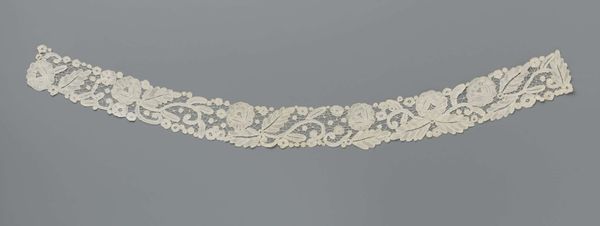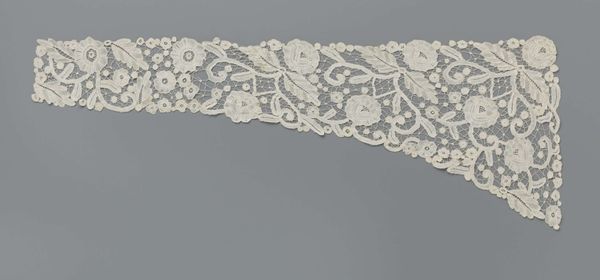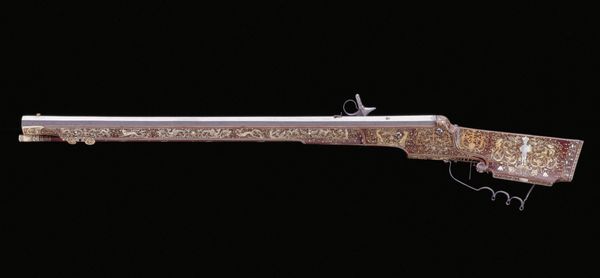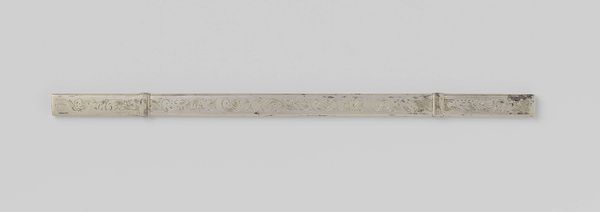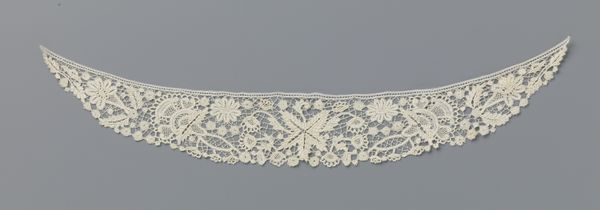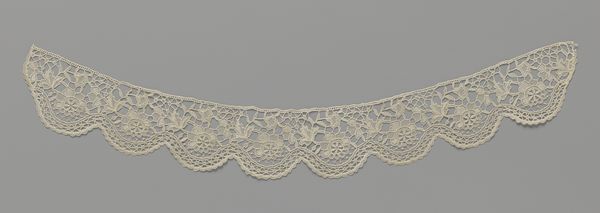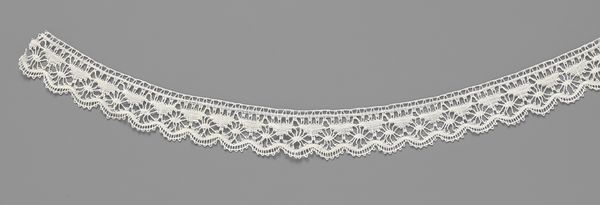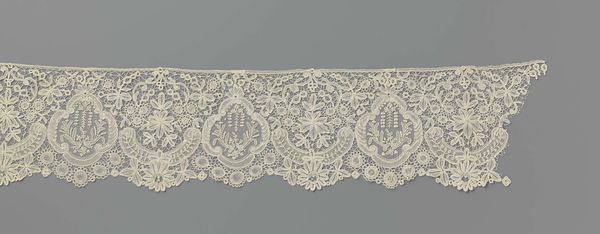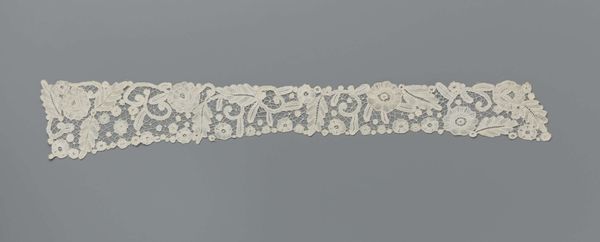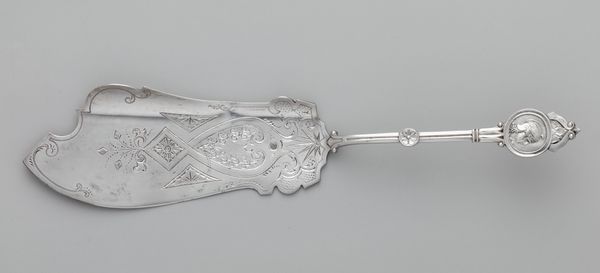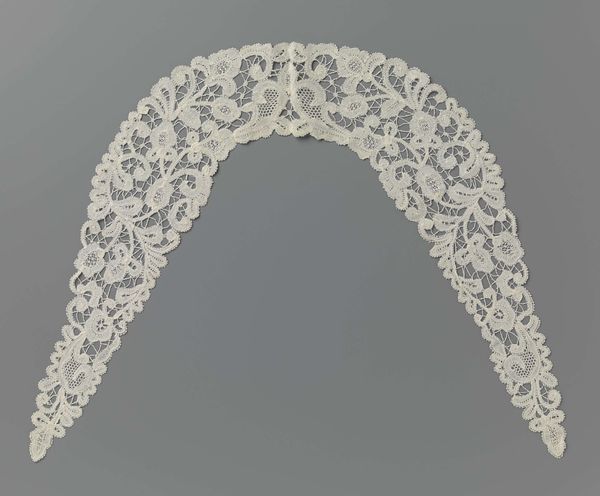
textile
#
pattern
#
textile
#
decorative-art
Dimensions: length 13 cm, width 11.2 cm
Copyright: Rijks Museum: Open Domain
Curator: Immediately striking, isn’t it? The Hemdapplicatie van roze machinale kant met bloem—or, shirt application of pink machine lace with flower—it shimmers with delicate craft. Editor: There’s a wistful elegance to it, yes. A quiet ornamentation that feels both timeless and intensely of its period. Looking at its form and structure, I note how the long band gives way to an almost heraldic floral flourish. Curator: Indeed. Crafted sometime between 1920 and 1930, its existence is inextricably linked to shifts in textile production. Machine-made lace democratized adornment in a way that handmade lace, often commissioned by the aristocracy, could not. What was previously limited in accessibility by social status, had become open to much larger public. Editor: From a semiotic perspective, the shift is compelling. Handmade lace, connoting exclusivity and status, is displaced. This machine-made replica mimics, thereby blurring and questioning the older structure and signs of value, particularly around notions of the individual artist versus mass production. Curator: It raises important questions, I think, about consumption in the roaring twenties. Who wore it, for what occasion? It might point towards the growing visibility of the middle class and their emulation of the upper classes’ habits. Consider also how the rise of department stores would democratize the commercial aspect of acquiring fine wares such as these. Editor: Consider too that visual rhythm it creates. From the continuous pattern of simplified flowers on the main length of lace, all energy seems to point towards its apex: this pronounced focal floral structure. One thinks of classical architectural details, of corbels and keystones. But is the floral element a direct symbolic reference, or is it just for aesthetic purpose? Curator: We see parallels with popular tastes—florals mirroring garden design that speaks to ideals of leisure and status at the time. It would need a deeper contextual research into specific clothing catalogues and advertisements for specific manufacturers to understand exactly why and how this piece became desired. Editor: A fascinating example of how shifting methods of production changes visual languages. Curator: Precisely. It highlights the impact technology has upon access, style, and society, which always continues evolving even today.
Comments
No comments
Be the first to comment and join the conversation on the ultimate creative platform.
